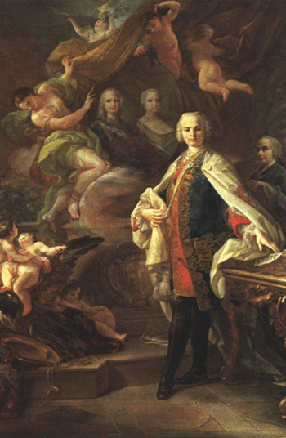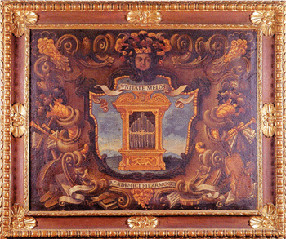In our journey into Bologna's historical music
institutions, we have arrived, in a rigorous order of appearance, at the
Music Conservatory G.B. Martini. The story we should be recounting, but
there is not enough space here, is long and complex, and closely linked to
the city, as probably no other Bolognese musical institutions. Until
the late eighteenth century, in fact, academies and religious institutions
(convents and orphanages) were almost exclusively in charge of the musical
education in Italy. Children who had learned music either remained in
the fold or began their career in the world of music as composers or
singers. In 1796, the French, who had decided to abolish religious orders
and convents, marked the disappearance of these venues dedicated
to musical education, promoting, in many cities, the first secular
music institutions such as Bologna's School of Music.
Let us be
clear: the French did not decide in 1806 to found this two hundred years
old institution; noble men of culture in Bologna, headed by Giovanni
Aldini, decided not to disperse the impressive heritage of material from
the San Petronio basilica and other smaller ecclesiastic chapels, the
library, and Father Martini's iconographic collection, and to bring
together the teaching experience of those who worked in these
institutions.

Its birth represented, together with schools in Milan,
Turin, Florence and Pesaro, though in different periods, one of the
first public community schools of music. It has had great
success since its beginning and between 1839 and 1848, years in which
Rossini was director, reaching international levels for the presence of
important teachers and for the performance, for the first time in Italy,
of instrumental and choral works of Viennese classics. In 1856, Gaetano
Gaspari began the monumental work of organizing the library, and in 1881
new initiatives took place, linked to the Community Theater
(topographically close and another music branch of the city) of which the
School often had in common the artistic guidance.
An important music director, Luigi Mancinelli, brought to Bologna the European symphonic repertoire, and, keeping a focus on instrumental music, were created the Quartet Society in 1879, the Wagner Society in 1887 and the Choral Society G. B. Martini in 1902, demonstrating that the School was not only that but also a venue for the dissemination in the city of less usual repertoires to the Italian public. We will want to remember two important dates at the end of this journey which has transformed Bologna's Conservatory, like the others, in Superior Institute of Music Studies of the University: In 1925 the School was named after Martini and in 1942, the State began administering it.
